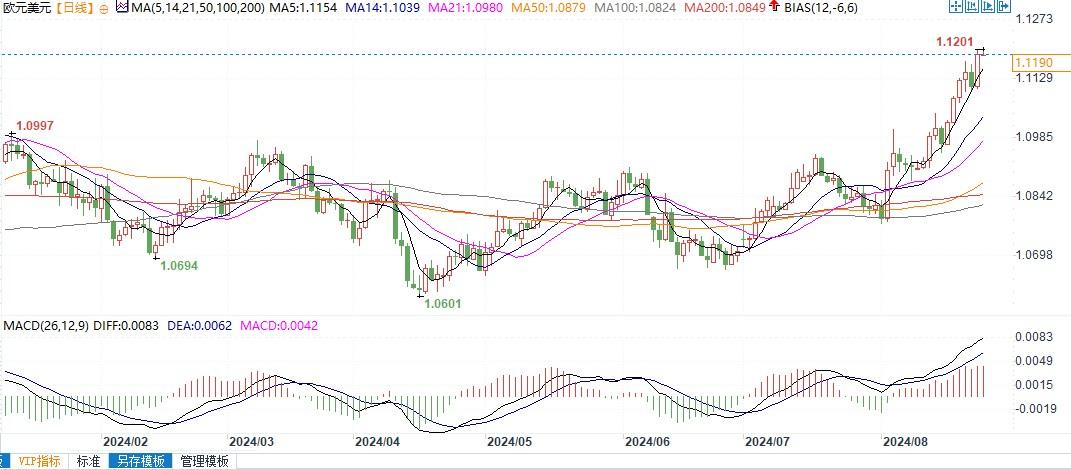Before the Federal Reserve's September decision, the EUR/USD may continue to rise!!
After the release of the minutes of the Federal Reserve's policy meeting at the end of July, the EUR/USD rose. The meeting minutes show that many members of the decision-making body are preparing to cut interest rates at the meeting, which strengthens expectations for a rate cut in September and further rate cuts in the coming months.
The aggressive loose policies of the United States have recently overshadowed the shadow of economic weakness in the eurozone. The euro rebounded by over 3% in August, and on the morning of August 26th, the Asian market hit a one-year high of 1.1201.
Market analyst Sam Coventry said that after experiencing a sharp rise, the EUR/USD looks a bit tired, but may not be ready to hit the top yet.
Ruta Prieskienyte, Chief Foreign Exchange Strategist at Convera, stated that in the past three weeks, expectations for the Federal Reserve's rate cuts have grown faster than expectations for the European Central Bank's rate cuts, resulting in a typical divergence in interest rate expectations and putting pressure on the US dollar relative to the euro.
Looking ahead, those who are concerned about the euro dollar exchange rate must ask to what extent the upward trend can continue. The risk faced by euro bulls is that trading has come to an end, which increases the possibility of a significant pullback in the euro, especially when the focus returns to the eurozone.
Prieskienyte said, "Due to the lingering political risks in the eurozone and the United States, we are bearish on the euro dollar trend over the next three months. However, we acknowledge that the short-term rise of the euro dollar may continue before the Federal Reserve's first interest rate cut in September." The Federal Reserve will hold its interest rate decision on September 18th.
At the same time, the PMI data for August showed a bleak outlook for the eurozone economy, and the wage tracking data from the European Central Bank showed a further decline in inflation, leading to a downturn in the eurozone economy. For the euro, if this prompts the European Central Bank to cut interest rates more than the market currently expects, it will increase the downside risk of the euro.
According to ECB data, negotiated wages in the second quarter of 2024 increased by 3.6% year-on-year, lower than the 4.7% year-on-year increase in the previous quarter.
Prieskienyte said that the decline in data has eased people's concerns about the wage price spiral. However, the situation is not entirely straightforward, as wage growth has slowed in France, the Netherlands, and Austria, but accelerated in Belgium, Italy, and Spain. However, the overall trend is that price pressure has eased, which marks the green light for monetary easing policy.

EUR/USD daily chart
Tips:This page came from Internet, which is not standing for FXCUE opinions of this website.
Statement:Contact us if the content violates the law or your rights
